Thirty trainees have successfully completed their three month probation period on the BWT (Bridport Walking Track) project. With a third of the track finished (approximately 1.5 kms), and six months of construction ahead, work is progressing well and according to schedule. Training and assessment of the following modules: Install Aggregate Paths, Treat Weeds, and Communications in the Workplace, along with value added components: Level 2 First Aid and White Card training have all been achieved. Equipping trainees with as many work skills and certificates as possible during this training program will hold them in good stead for employment placements post BWT.
As expected, significant changes have occurred in the working and personal lives of the trainees. This has ranged from the habit of wearing their compulsory PPE (Personal Protective Equipment) to improving their work ethics; time management, attitudes, interpersonal communication, working in a team, demonstrating initiative and dependability. Complimenting the team ethos, new friendships have developed and recently some trainees participated in a social camping trip over the Christmas/New Year break.
A few trainees are also stepping-up-to-the-plate showing great leadership potential. Therefore, opportunities are being taken to split teams into smaller units, allowing more work to be done unsupervised. Since the first day of track construction overall skill levels have significantly improved.
Value added training in dry stone arched bridge construction was offered recently to 6 handpicked trainees.
They worked alongside CVA personnel on the Cascades Track in Hobart. Trainees also videotaped their experience with a presentation to be made in the near future to the Hobart City Council who is partnering CVA on the project.
Rock work has become a key feature of track construction.
With an ample supply of rock, courtesy of Dorset Council, the team leaders have maximized the opportunity to provide training in this specialized field. Many trainees have shown considerable creativity with the construction of elevated paths (due to tidal and flooding events), terraced ramps, rock seating, benching and drains. This has been noticed by key personnel/project partners such as Dorset Council, DEEWR (Dep’t Educ’n Employment & Workplace Relations), BI (Bridport Innovations), CVA (Conservation Volunteers Australia), Job Search Agencies, and other visitors who have all become the BWT’s greatest advocates.
Opportunities to give back to the community have also arisen and recently the trainees were involved in a major thistle weeding exercise at Granite Point. This became a two day event with eight trailer loads of thistles eventually being taken to the tip. Visitors to the Granite Point area should be heartened by the fact that the area is being returned to its native vegetative state through the efforts of the BWT project team!
The trainees are always happy to show interested visitors their work and are proud of their achievements to date through participating in a life-changing training project. Intending visitors are asked to come to the site office at Allan Barnett Fisheries Pty Ltd on Main St during work hours, or telephone the Program Manager Judy Barnett on 6356 1392. CVA will arrange for one of the trainees to offer an interpretative tour.
The track will be opened to the general public after June 30, 2011, when construction is expected to be completed.
By Judy Barnett
CVA Program Manager of the BWT
This Project is supported by funding from the Australian Government

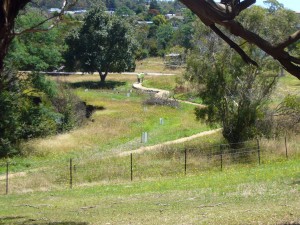
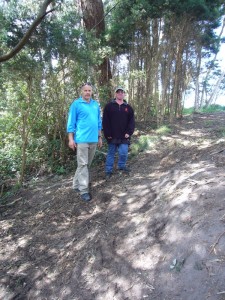
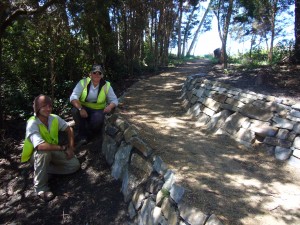
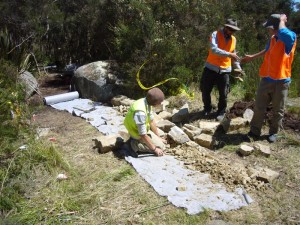
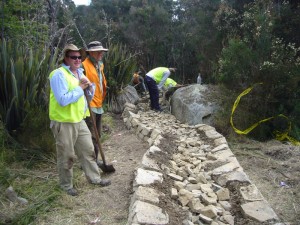
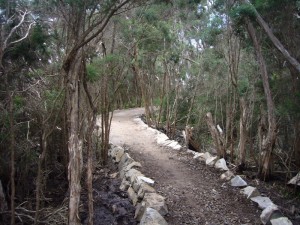


A friend has told me all about this wonderful track, I congratulate you on the management of the entire project. I have visted Bridport over the years and have walked the foreshore and wildflower reserve tracks and now look forward to finishing the entire circuit.
knowing the circuit and its distance I for one would enjoy knowing that there will be some shelters I can aim to if I get caught in inclement weather. I do look forward to some seating along the way as well. Maybe your project has allowed for the installation of the above.
Congratulations to all for a job well done.
Thank you for your kind comments and feedback on the track Louise. I look forward to sharing your comments with the trainees who are in the last few weeks of their employment. The last load of base gravel has been laid today and then another 1.6 kms of top gravel should see a finished product. We are also continuing with a native replanting program and regular track maintenance. This has been a wonderful project and a terrific asset for the community and region. A website will be coming soon and you can join the friends of the Bridport Walking Track on Facebook. Thanks again and all the best. Trackward!